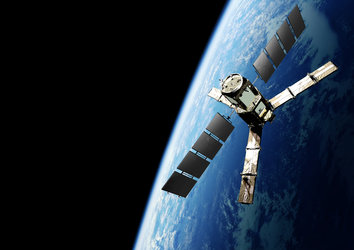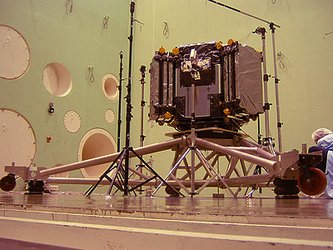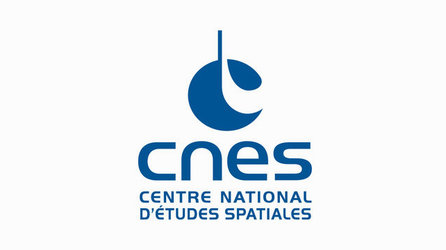SMOS shakes again
In preparation for launch next year, SMOS is undergoing its final vibration test at Thales Alenia Space in Cannes, France. "Vibration tests again?", followers of SMOS might ask. True, but this time the payload and platform are being put through their paces together as the integrated satellite.
The first vibration tests on ESA's water mission SMOS (Soil Moisture and Ocean Salinity) were made at payload level, on a so-called structural model. This ensured that the payload design was sound and that it would survive the rigours of launch. Those tests were also used to derive the appropriate test levels to be applied to all the flight subsystems, which had to be delivered fully tested before being integrated into the overall payload.
Once accomplished, the next vibration tests were carried out on the real payload, which had been fitted with all the electronic boxes, mechanisms, harness and thermal control hardware. After the qualification process had been completed, the payload was formally handed over to the French Space Agency CNES. As ESA's partner in the SMOS project, CNES is responsible for integrating the payload with the Proteus platform.
Whereas the payload had already been through a comprehensive testing programme, the Proteus platform was 'new'. However, it generic design has already been proven since it was used for the Jason 1 project, so further testing was not needed until platform and payload were united.
The current vibration tests on the merged platform and SMOS payload simulate the noise that it will be exposed to under the fairing during launch. In addition, the satellite is tested by way of a live 'pyro firing', to make sure that that it will survive the shock of separation when the Rockot launcher releases it into orbit.
Once this has been successfully completed, the teams from CNES, EADS-CASA, ESA and Thales Alenia Space will take a well-deserved break through Christmas before embarking on the thermal vacuum tests early next year.
The SMOS mission will provide global maps of soil moisture and ocean salinity. Soil moisture data are urgently required for hydrological studies and data on ocean salinity are vital for improving our understanding of ocean circulation patterns. Together these data will contribute to furthering our knowledge of the Earth's water cycle, and will improve climate, weather and extreme-event forecasting.















 Germany
Germany
 Austria
Austria
 Belgium
Belgium
 Denmark
Denmark
 Spain
Spain
 Estonia
Estonia
 Finland
Finland
 France
France
 Greece
Greece
 Hungary
Hungary
 Ireland
Ireland
 Italy
Italy
 Luxembourg
Luxembourg
 Norway
Norway
 The Netherlands
The Netherlands
 Poland
Poland
 Portugal
Portugal
 Czechia
Czechia
 Romania
Romania
 United Kingdom
United Kingdom
 Slovenia
Slovenia
 Sweden
Sweden
 Switzerland
Switzerland

































